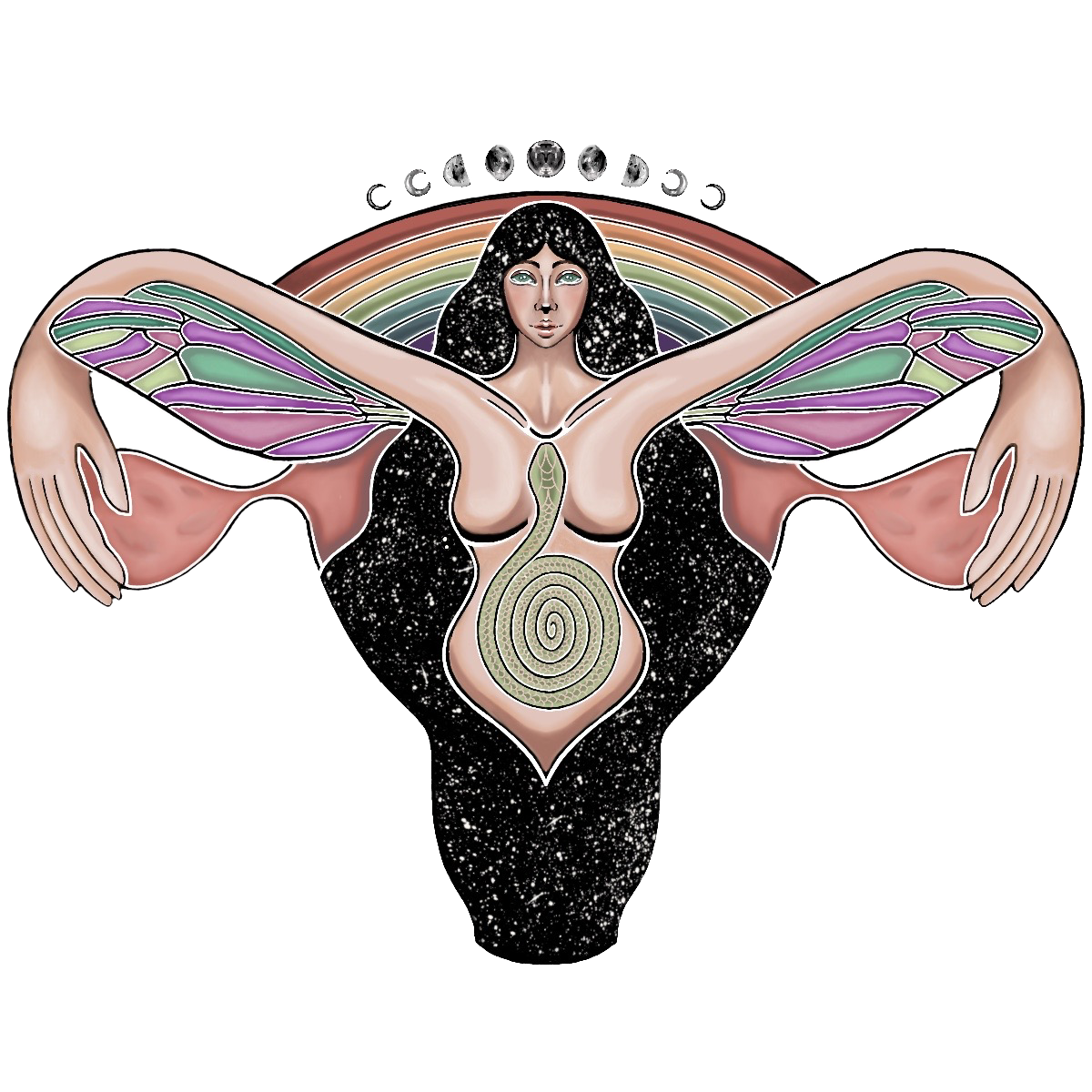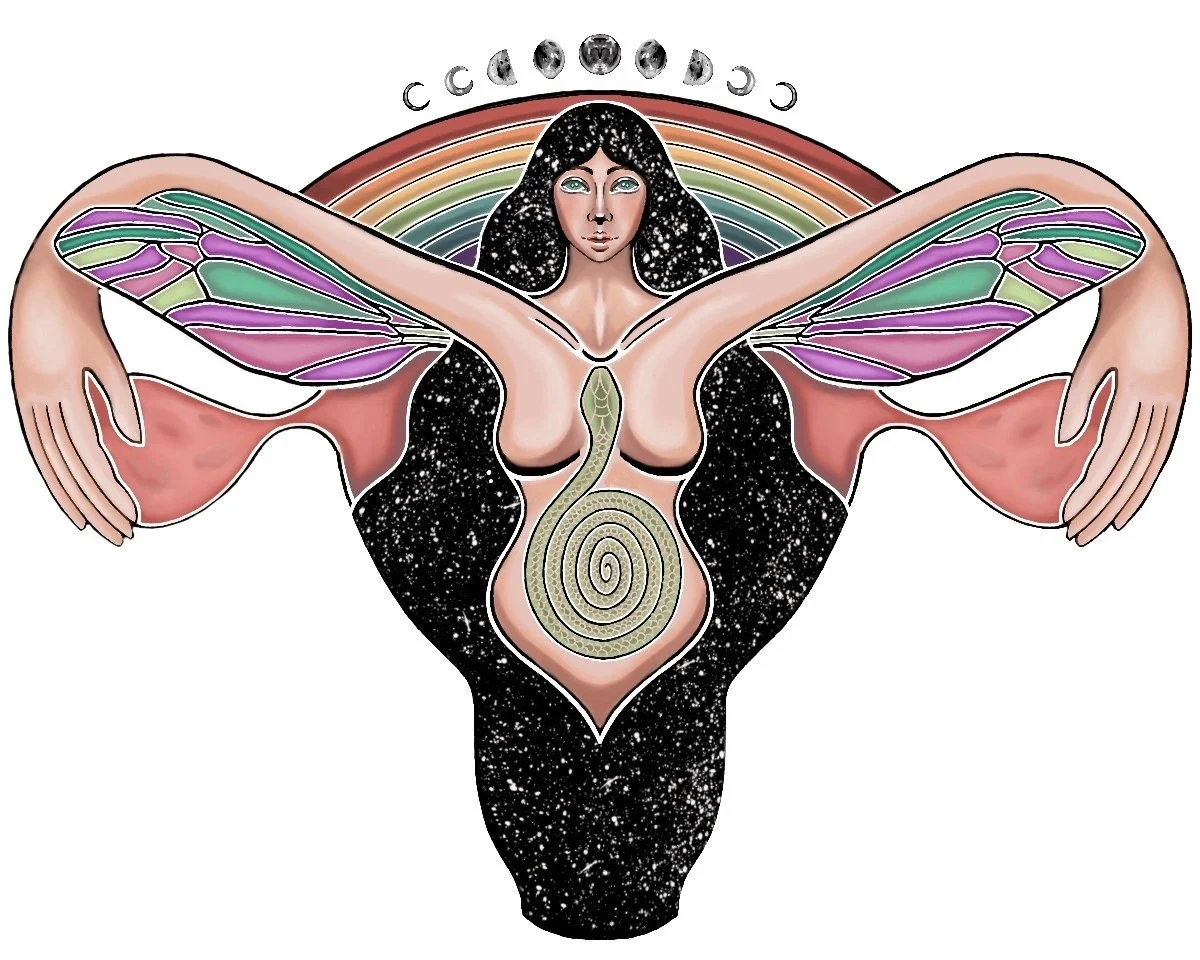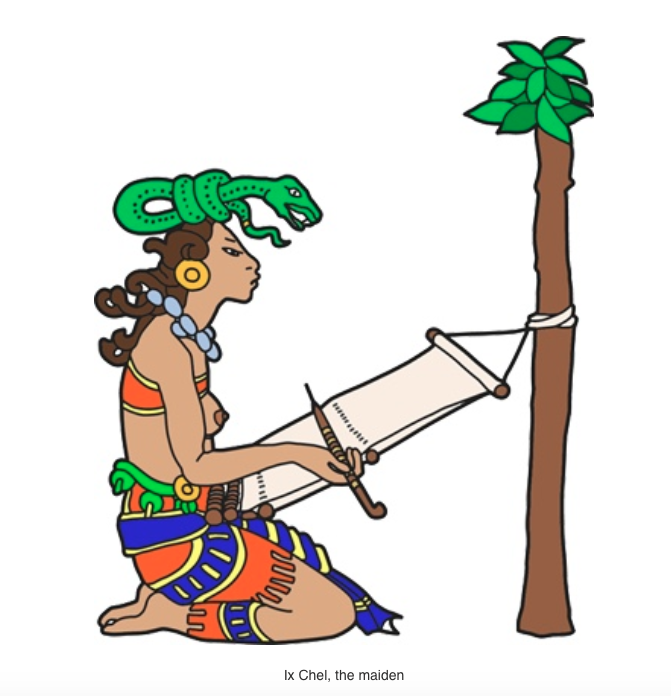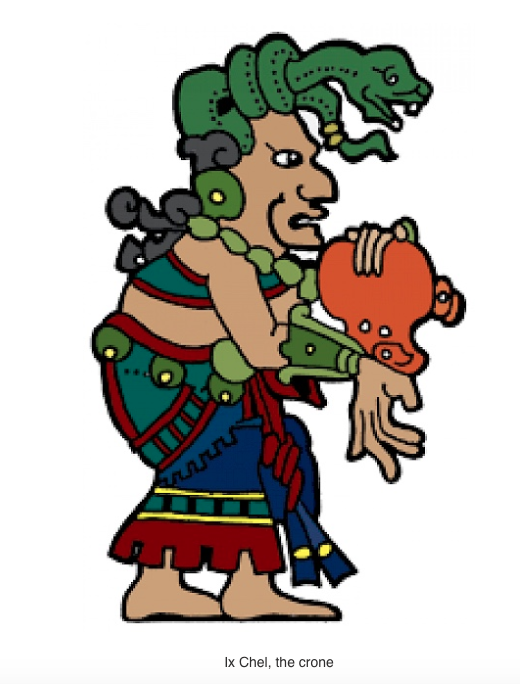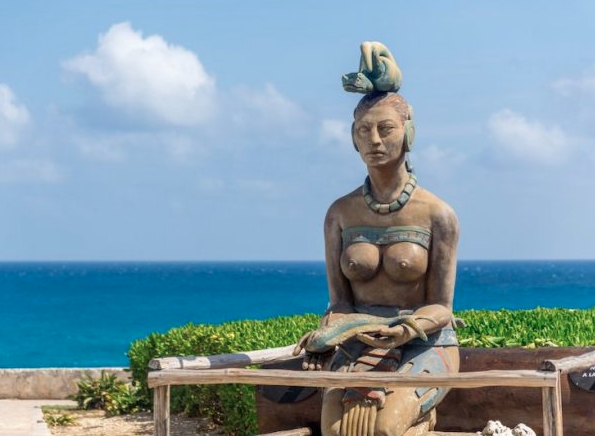THE GODDESS
IX CHEL
The image above is Kat’s version of the Goddess within all womb carriers. Our uterus—the sacred space of creation, transformation and deep intuitive wisdom—is the center for her healing practice.
This image was made in collaboration with Rose Unfolding Art.
Goddess of medicine and fertility, Ix Chel is Lady Rainbow. She dances with the rhythms of the moon, woven with the wings of dragonfly and the image of snake. She is the patroness and spiritual guide of Maya Abdominal Therapy.
Ix Chel (pronounced eesh chel). “Ix” in Maya means goddess or sacred feminine. “Chel” means rainbow or light.
Like many other Goddesses of the world, Ix Chel depicts the three stages of a woman’s life:
In Ix Chel’s manifestation of the mother, where her and her partner, Itzamna, were co-creators of the universe, the Divine Parents. She sits poised on a crescent moon to signifying the moon’s effect on menstrual change. She’s holding a rabbit, a symbol of fertility and abundance. Her snake is gone - she’s too busy raising her family to be doing much healing work for others.
The maiden manifestation of Ix Chel shows her at her loom, weaving the cosmos. She has a snake on her head, showing her power over medicine. She’s youthful, hasn’t had children yet, and dedicates her time to this work. She is the embodiment of femininity.
Finally, as the Crone, or Grandmother, Ix Chel again is accompanied by the serpent on her head; her healing, spiritual, and intuitive abilities are stronger than ever. She is the Goddess of medicine and the moon. Her connection to plants and water are powerful: She pours her clay pot, shaped like a uterus, of herbs and water onto the Earth bring us blessings. She is an elder and this is her time to be revered, to realize the culmination of all her life and to share her wisdom forward.
The Sacred Island of Cozumel
Until the 1600’s, Mayan women were obliged to make two pilgrimages in their lifetime to the Temple of Ix Chel on the island of Cozumel (Cuzamil) off eastern coast of Mexico's Yucatán Peninsula. Going once at menarche (when first starting menses) and the second at menopause, women would travel from as far away as present day Mexico City and as far south as Nicaragua and Panama to visit the sacred island. They went to asked Ix Chel for fertility and for a joyful motherhood, and again later in life to give thanks for the children they bore and would brought their daughters of marriageable age to complete their first pilgrimage.
Escorted by men in wooden ocean-going canoes, they would paddle across the seas from Xcaret (Pole) to Cozumel– a twelve hour dangerous journey. Once safely at the island, only the women and orphaned children were allowed there. All were cared for and given purpose. Maya women— including widows, barren women, abused women, lesbians and all who needed or chose to live on the island—would be trained in astrology, calendric studies, healing with herbs, prayers, massage and divination. In addition to their obligatory pilgrimages, many traveled to Cozumel to give birth because “to be born on the Goddess’ island bestowed great honor and prestige”.
Although open to the public and easily assessable by boat today, the historic crossing from Tulum to Cozumel, called La Travesia, is still re-enacted each May. And the potency of the this scared island can still be felt.
